Yogyakarta is the second most popular destination after Bali in Indonesia. Also known as Jogjakarta, the beautiful city never fails to amaze with its old world charm and natural beauty. Steep in history, Yogya is the centre of Javanese art and culture, the cradle of civilization on Java where a few world heritage sites are located in the city and surroundings. It is the gateway to one of the world wonders – Borobudur Temple, Prambanan Temple and Indonesia’s most active volcano – Mount Merapi.
Mount Merapi
Literally the Mountain of Fire, Mount Merapi creates a picturesque backdrop for the sleepy village. On a clear day, we can see the craggy peak of the volcano that’s one of the most volatile in the world. It’s said that Mount Merapi erupts once every 3 to 5 years, with the most recent eruption on 30 November 2010. Over 300 people were killed and many homes destroyed.
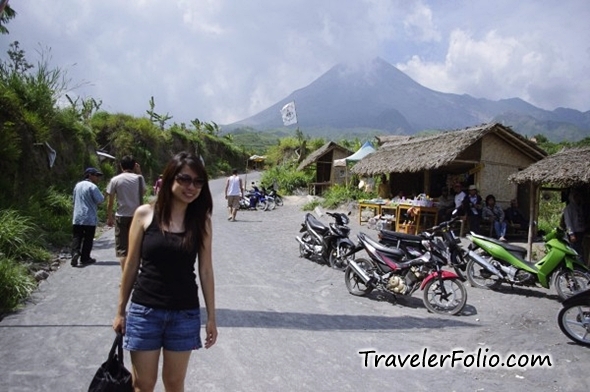
A postcard-esque view of Mount Merapi looming over the village.

Located near Mount Merapi, Museum Mount Merapi showcases Merapi stones and photos of eruptions since 1900. There are maps and interactive exhibits to educate the public the geology of volcanoes in Indonesia. The museum aims to raise the awareness of volcano hazards and emergency preparedness.
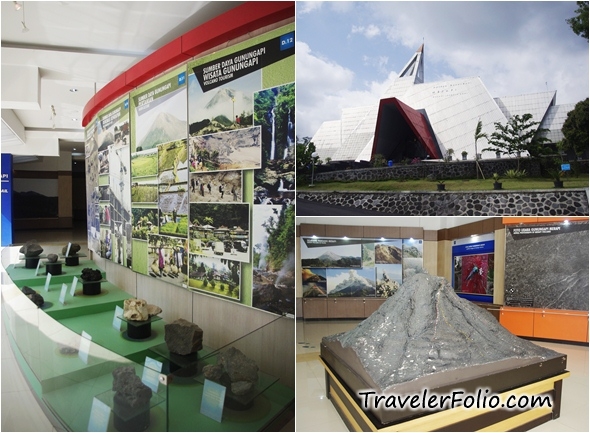
Borobudur Temple
My folks and friends have been telling me they wanted to see the world wonder – Borobudur Temple, years before I finally visited the ancient site of the 9th centuries. Borobudur is widely known as one of the world’s seven wonders and biggest Buddhist monument. I went there twice – during sunrise and noon time. It’s recommended to visit the temple monument in the morning to catch the magical sunrise, with less tourists and at a cooler temperature.
Read Borobudur Temple on my previous blog post.
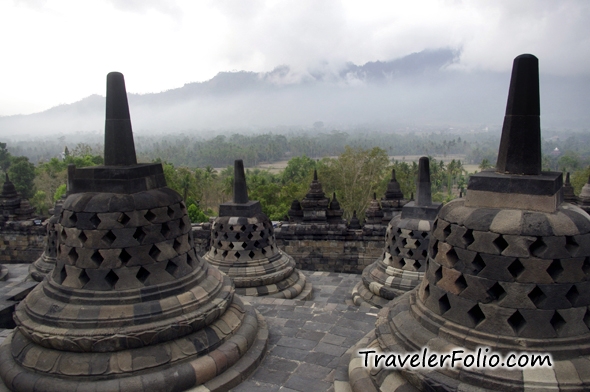
Prambanan Temple
The Prambanan UNESCO World Heritage Site is one of my favourites in Indonesia. From far, we can see an imposing complex of towering, pointed Hindu temples exuding an aura of divinity.
Built in the 9th centuries as a royal temple, Prambanan is the largest Hindu temple in Indonesia and one of the largest in Southeast Asia. Unfortunately, the temple was significantly damaged in the 2006 earthquake. However, it’s definitely worth visiting this important religious site when you are in Yogyakarta.
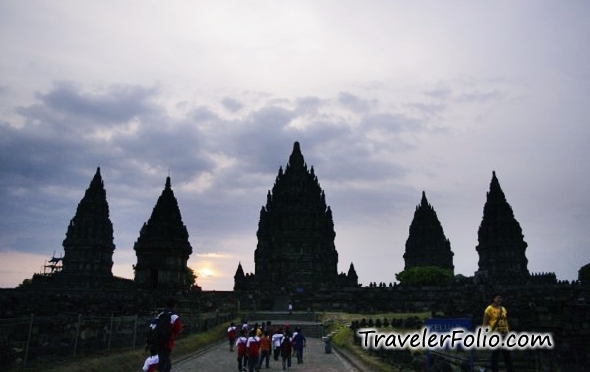
A complex of Hindu temples at the compound.

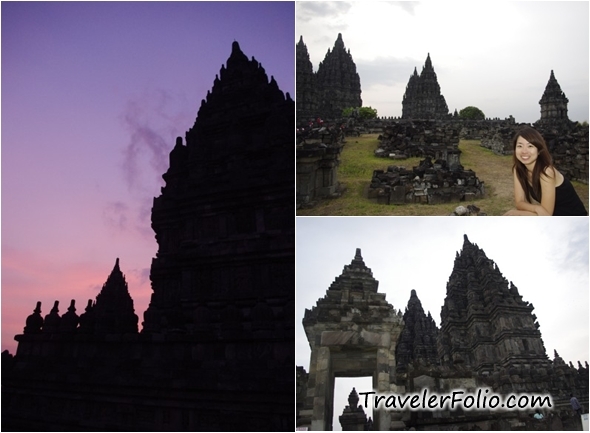
Whilst it’s highly recommended to catch sunrise at Borobudur, how about sunset at Prambanan? On my first trip to Yogya (via AirAsia), we only managed to arrive at Prambanan Temple in the evening. When the sky was getting dark and we thought it was too late to explore the temple, everyone started clicking away at the mesmerizing colours of sunset.
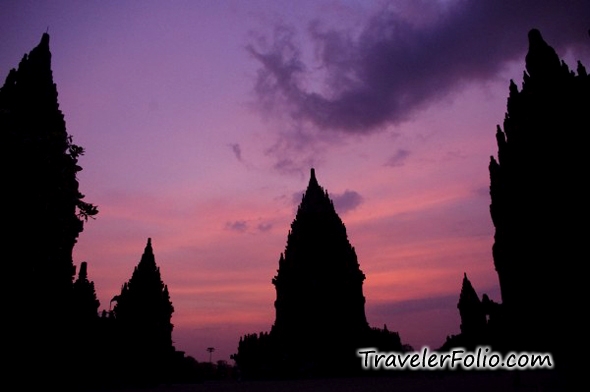
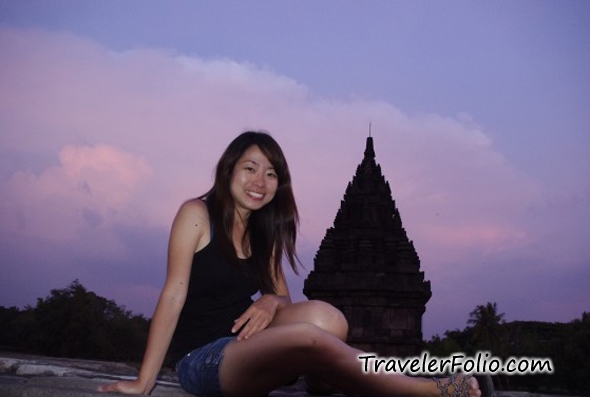
Ramayana Ballet Prambanan
In the evening, catch the Ramayana Ballet at the amphitheatre that is set against the spellbinding backdrop of Prambanan Temple. Adapted from an epic Hindu poem, the 2.5 hr Javanese dance drama is choreographed with gamelan music, graceful dance movements and clashing battles of the performers donning colourful costumes.
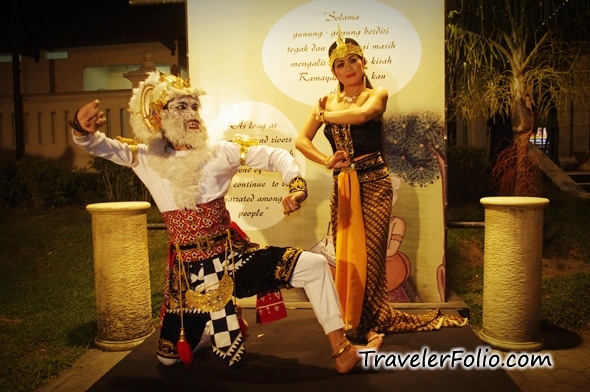
The story was said to depict the reliefs at Prambanan Temple. It revolves around the courtship of a beautiful princess who is later kidnapped and battles ensued, involving acrobatic stunts and eye-catching fireballs.
I watched this performance twice and on both occasions, the seats at the open theatre were mostly taken up. A must-see at Prambanan.
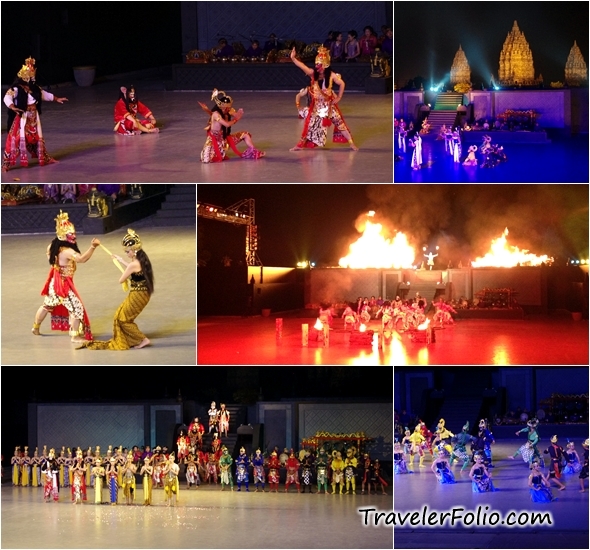
Kraton Yogyakarta
Kraton Yogyakarta is the Sultan’s palace where the royal family resides. Part of the palace is open to the public as an attraction for visitors to understand the Javanese culture and lifestyle. It’s a living museum housing huge collections of old photographs, ceramics, traditional clothes, weapons, batik designs among others kept in different themed rooms.
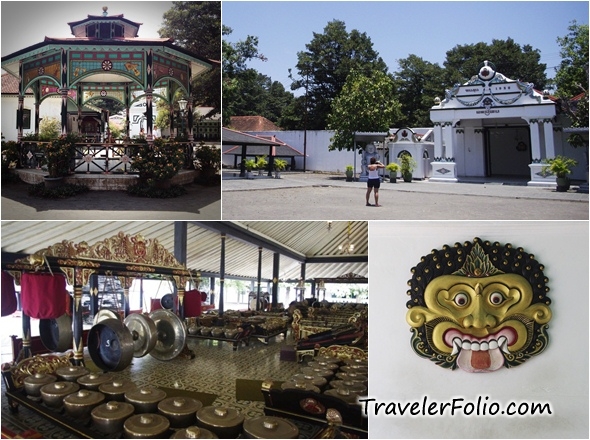
At certain timings, there will be gamelan music performance at the palace.
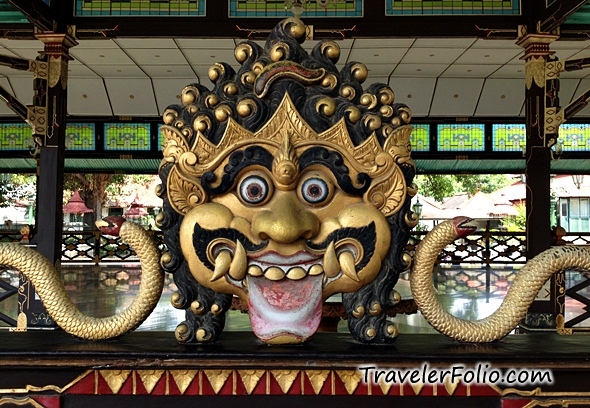
One of the rooms exhibiting royal opulence.
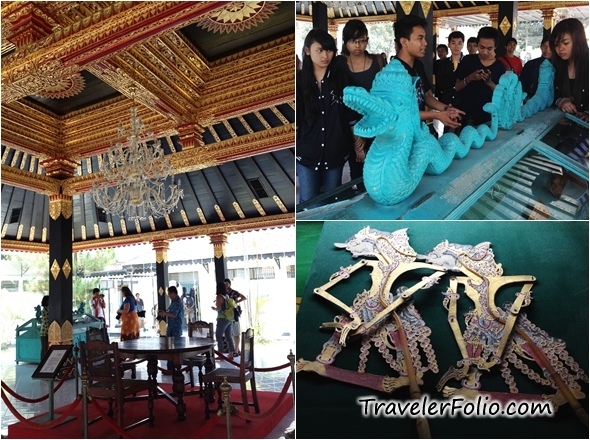
Posing with one of the palace guards… they have weapon at the back!
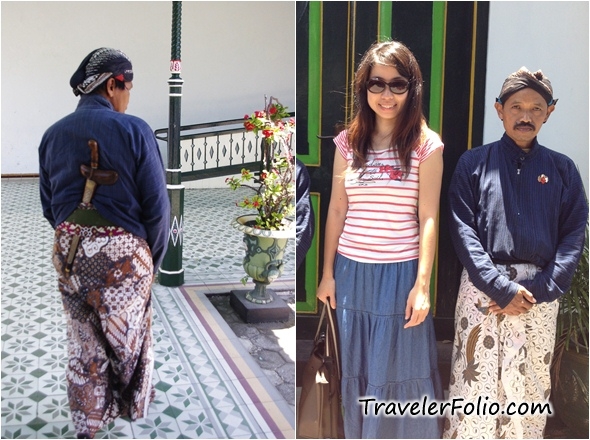
Shape of a lotus – a symbol of purity, against the blue sky.
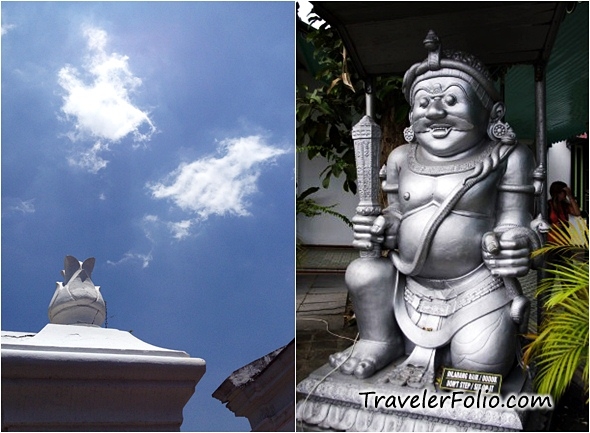
Taman Sari Water Palace
Taman Sari was inscribed on UNESCO World Heritage List since 1995. The water palace is like a resort with spa pools. Located in merely 2km from the Sultan’s palace It used to be the royal garden of the former Sultanate of Yogyakarta for rest and relax.
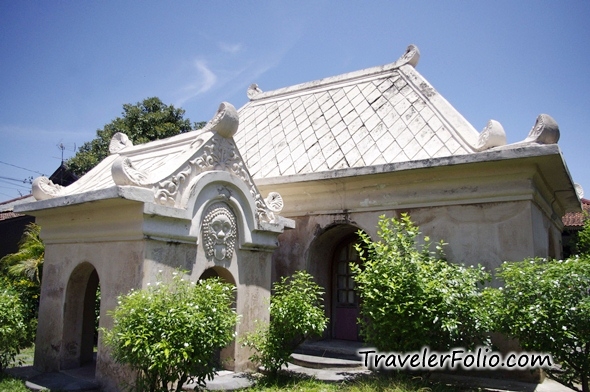

From the highest level at Taman Sri, the Sultan at that time would choose his concubine among the women bathing in the pools.
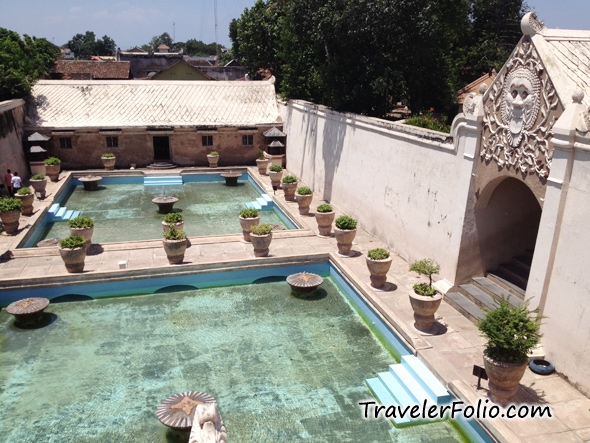
The entrance wall of Taman Sari that still preserves the regal splendour of the past.
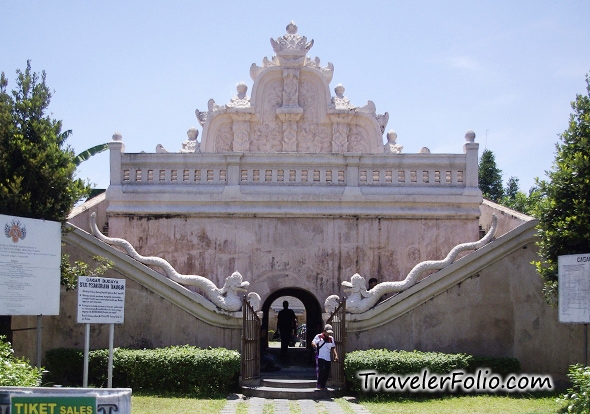
Batik making
Batik is commonly found in Java island and Yogyakarta is the centre of Javanese arts and traditional textile production including Batik.
Pay a visit to a Batik factory to understand the time-consuming process of Batik making and see how the workers demonstrate Hand Writing Batik Process which involves the use of a canting filled with hot wax to trace the intricate patterns on the cloth; and Hand Blocking Batik Process that uses a special block to press the design on the cloth with hot wax.
It takes meticulous effort in Batik making.
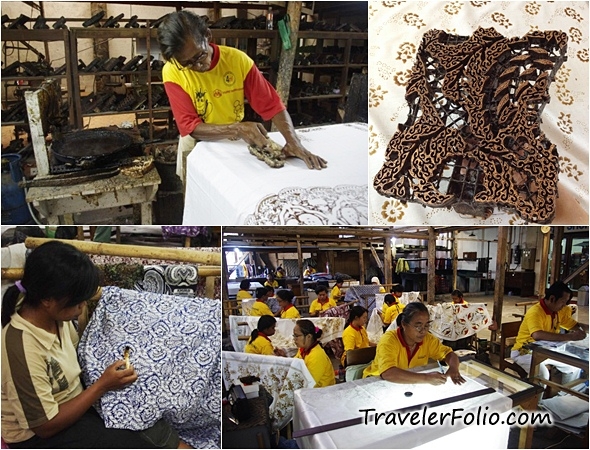
My first time making Batik! It looks easier than it is! Initially, the hot wax in the canting flowed out too quickly that it covered up areas outside the pencil mark. The red Batik with flowers and a self-created butterfly was my first attempt.
Apparently, the bottom right piece done on my second attempt looks much better! ‘Cos I cheated. 😛 I scrapped off the dried wax that was not traced properly with fingernails. It really requires a lot of patience to trace the details with a hot wax-filled canting on a piece of cloth.
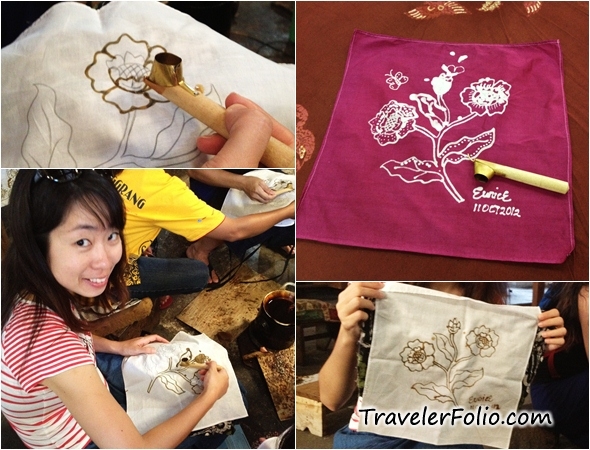
My Batik was sent to colour dye and boil to remove all the wax to finish.

How to find out if the Batik is authentic or a fake batik print fabric?
According to our tour guide…
Identify a “faulty spot” on the Batik material and simply look at the other side of the material to see if the spot is there. If it is, this is the real stuff.
Batik is made by covering the patterns with wax so that the dye does not penetrate the cloth during the process. Therefore, the “faulty spot” could be the cause of an “accidental spill” of wax!
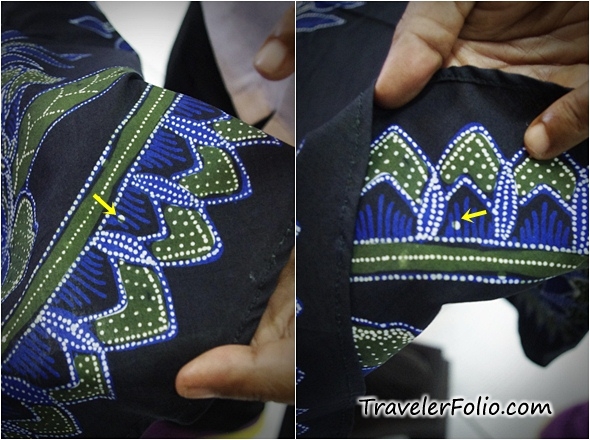
Yogyakarta is the modern city of steep Javanese history, culture, culinary delights, art and traditions, natural wonders and heritage sites. Locals love the city known for its slower pace of life, harmony and warm hospitality of the people.
Read all posts on Yogyakarta | Travel2Indonesia project.

Hi, Eunice the traveler!
What a pleasure to visit Jogja! It always has welcoming atmosphere.
There’s always something interesting there. I’ve visited there couple times but I have not explored the whole yet.
Greetings from Indo, safe journey…
“Leave nothing but footprints. Take nothing but pictures. Kill nothing but time”
Thanks for dropping by!
hi so nice traveling.
name of weapon from palace guard ( or we call abdi dalem *javanese ) is “KERIS” ,